The Rhythm of the Rails: Jack Delano’s iconic 1940s images of trains, railyards and workers
posted Friday, May 3, 2013 at 3:50 PM EST
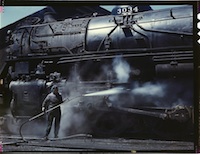
Jack Delano's gorgeous color images from the 1940s remind us of the day when railroads dominated the American landscape -- and the American consciousness. The gigantic locomotives, the play of light on steel rails and the huge roundhouses were all elements that spurred the imagination and presented a subject of infinite possibilities for a photographer. The railroads had bound the country together and opened the West. Chicago was the hub, especially the Chicago and North Western Railway Company's Proviso yard.
Working for the U.S. Farm Security Administration, he traveled across America photographing the effects of the Depression on American life. At the time, the railroads meant freedom and they seduced thousands of unemployed men -- and some women -- to ride the rails. They hitched rides on freight trains and hid in empty cars or slept on top of them, always on the alert for the railroad cops. In the depths of the Depression, their primary goal was to get "somewhere else" and find a job.
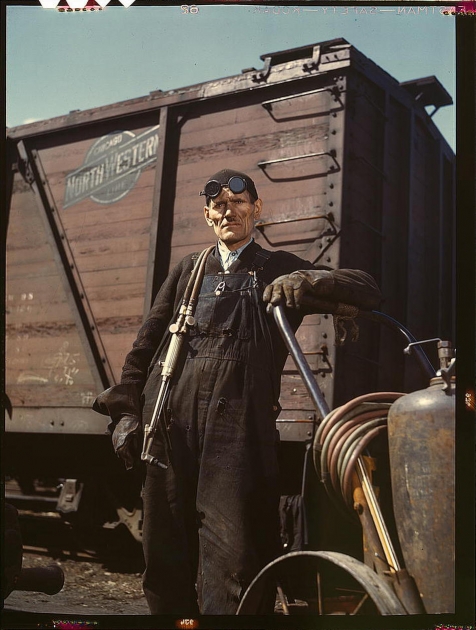
Mike Evans, a welder, at the rip tracks at Proviso yard of the Chicago and North Western Railway Company. Chicago, Illinois, April 1943. Reproduction from color slide.
Photo by Jack Delano. Prints and Photographs Division, Library of Congress
Delano was originally one of those job seekers himself when he proposed a photographic project to document the mining operations and working conditions of the Schuylkill County, Pennsylvania-area, coal mines. He sent samples of his photographs and applied for a job at the FSA's Photography program, which was headed by the charismatic Roy Stryker and was part of President Franklin Delano Roosevelt's 1933 New Deal -- a program aimed at creating jobs for some of America's millions of unemployed.
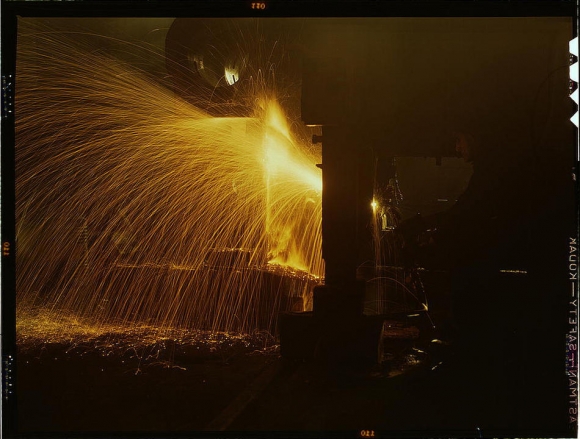
A welder who works in the round-house at the Chicago and North Western Railway Company's Proviso yard. Chicago, Illinois, December 1942. Reproduction from color slide.
Photo by Jack Delano. Prints and Photographs Division, Library of Congress
At the recommendation of the photographer Marion Post Wolcott, Stryker hired the young Delano on the condition that he had his own car and a driver's license. At a salary of $2,300 a year, Delano -- along with Wolcott, Russell Lee, Walker Evans, Gordon Parks, Dorothea Lange and others -- helped produce what is probably the greatest photographic record of American life ever made.
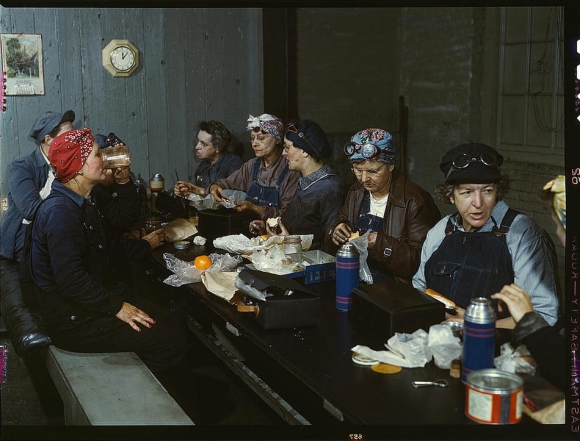
Women workers employed as wipers in the roundhouse having lunch in their rest room, Chicago and North Western Railway Company. Clinton, Iowa, April 1943. Reproduction from color slide.
Photo by Jack Delano. Prints and Photographs Division, Library of Congress
Surprisingly a large number of these images were shot in color with the newly available Kodachrome transparency film. Delano was one of the FSA photographers who shot a good deal of his work in color, both as Kodachrome 35mm slides and medium format transparencies. In 2006, the Library of Congress produced an exhibition, Bound For Glory, which for the first time featured a collection of these color photographs taken by the FSA photographers.
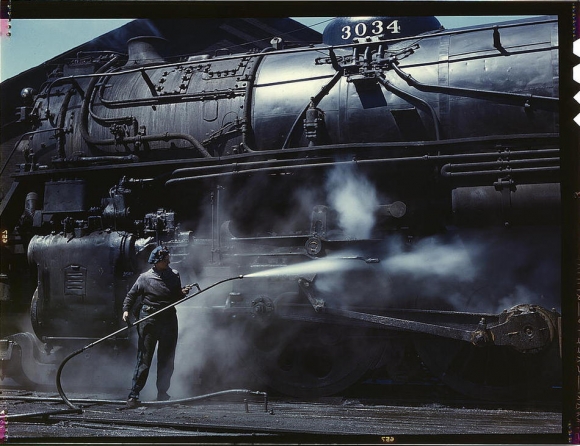
Mrs. Viola Sievers, one of the wipers at the roundhouse giving a giant "H" class locomotive a bath of live steam. Clinton, Iowa, April 1943. Reproduction from color slide.
Photo by Jack Delano. Prints and Photographs Division, Library of Congress
The benefits of classical training
Born Jacob Ovcharov in 1914 in the small Russian village of Voroshilovka, Delano came to America in 1923 with his parents and younger brother. By the age of 9 his creative talents were already evident, and he attended the Settlement Music School in Philadelphia where he studied graphic arts, photography and the viola. After that he continued his studies of illustration and music at the Pennsylvania Academy of the Fine Arts until 1932.
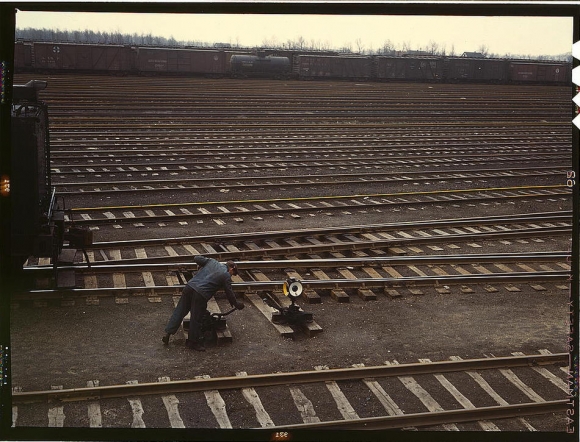
Switchman throwing a switch at Chicago and North Western Railway Company's Proviso yard. Chicago, Illinois, April 1943. Reproduction from color slide.
Photo by Jack Delano. Prints and Photographs Division, Library of Congress
In these Chicago North Western Railroad photographs, I think you can feel Delano's musical training. Like his contemporary -- the similarly classically trained Ansel Adams -- there is the same sense of power and grandeur. They share the romanticism of the New World, where Nature and Technology have replaced the old gods. In Delano's photographs the trains and the railyards dwarf people, in much the same way as the landscape does in Adams' photographs.
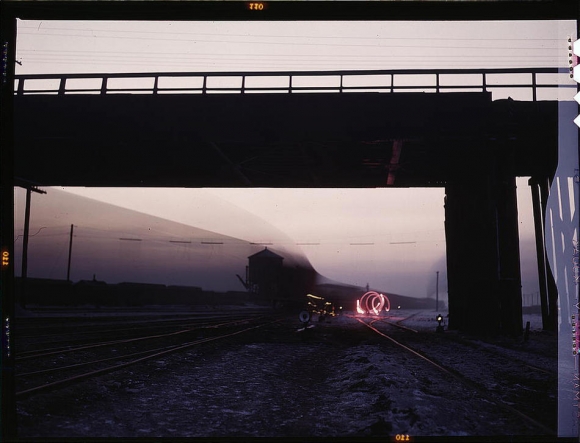
View in a departure yard at Chicago and North Western Railway Company's Proviso yard at twilight. Chicago, Illinois, December 1942. Reproduction from color slide.
Photo by Jack Delano. Prints and Photographs Division, Library of Congress
More than just a photographer
In 1941, Stryker sent Delano to photograph rural poverty in Puerto Rico. He fell in love with the island and, in 1946, he and his wife Irene settled there permanently. Delano began to write music, and for the next 50 years produced full orchestral, chamber and instrumental works, choral pieces and more. (You can see and hear one of his compositions played by the Orquesta Sinfonica del Conservatorio de Puerto Rico below.)
In Puerto Rico, Delano began to make movies of island life and, in 1953, directed and wrote the score for a film called Los Peloteros about poor rural kids and their love for baseball. The film became a classic in Puerto Rican cinema.
Like so many photographers of his time, Delano was a multi-faceted talent. And although he died in 1997, he left us the legacy of his superb photographs and his music compositions.
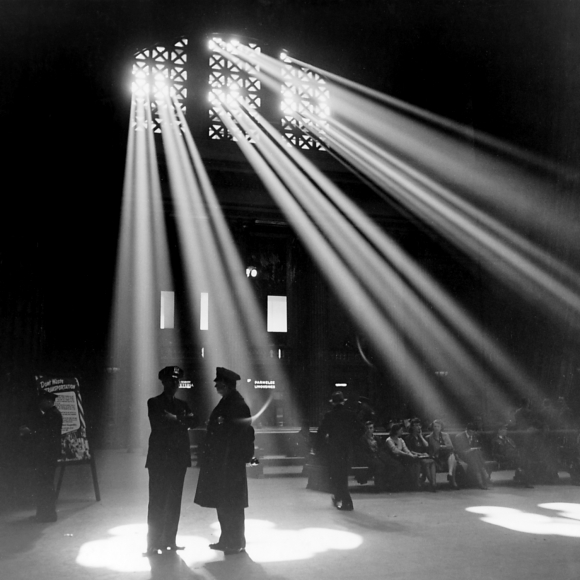
Chicago Union Station, 1943. Photo by Jack Delano.